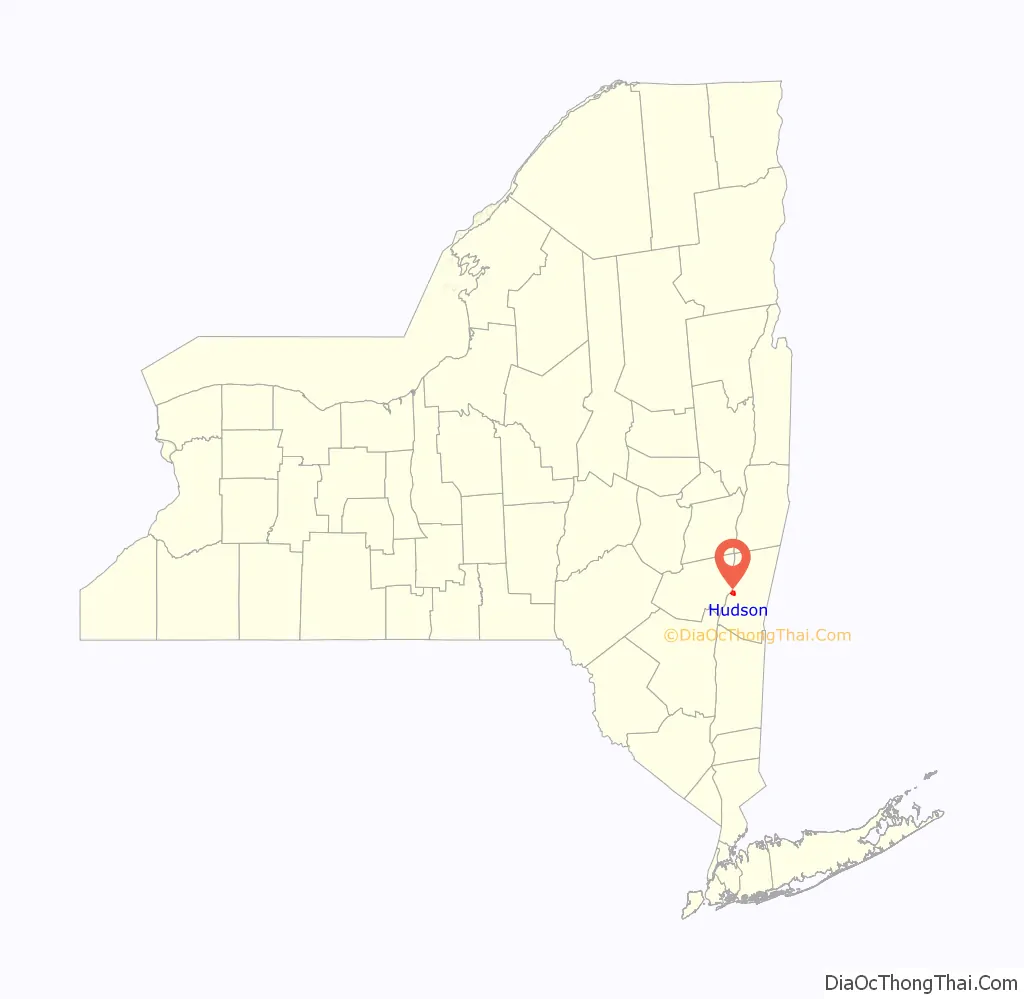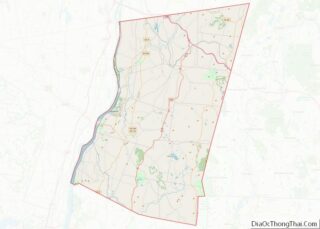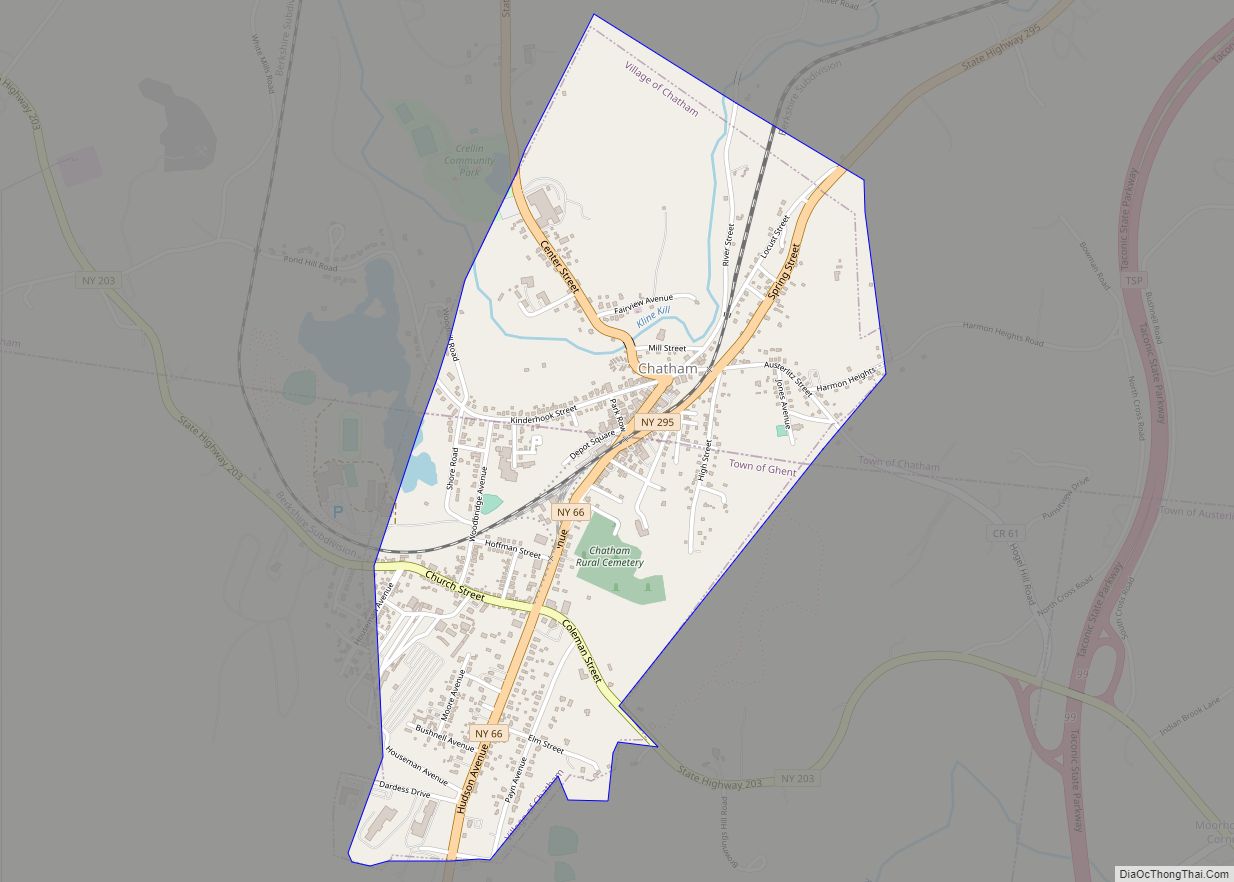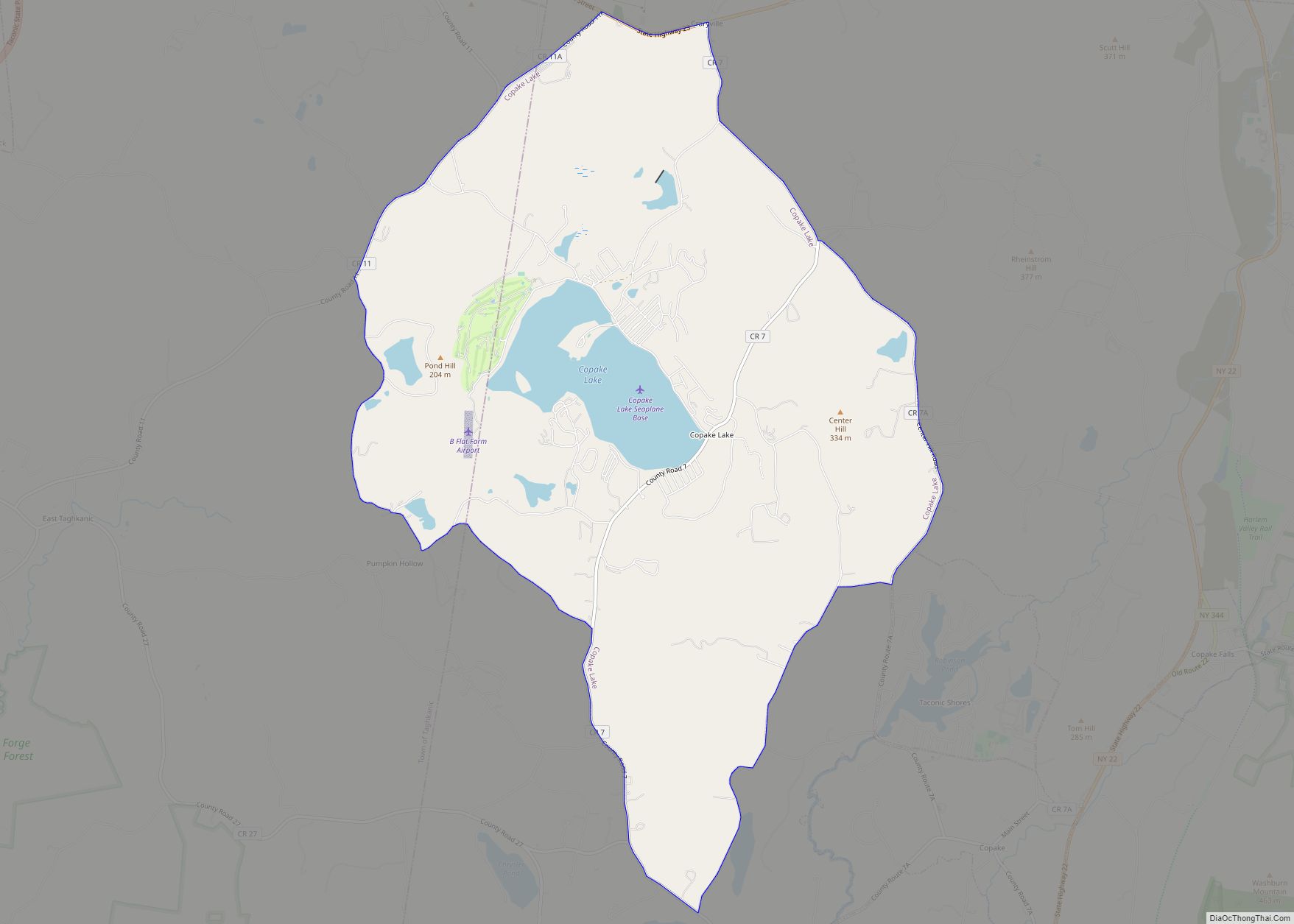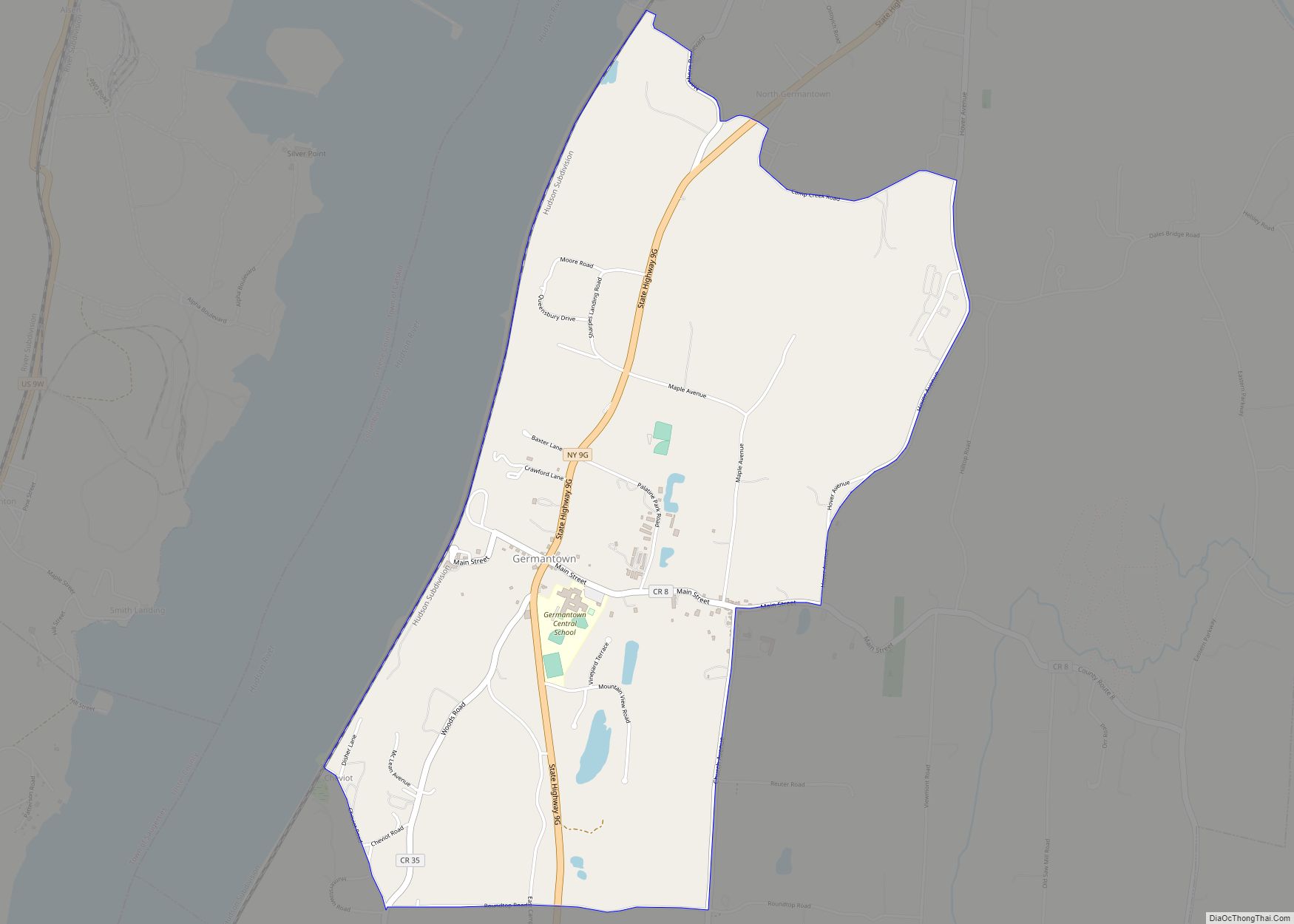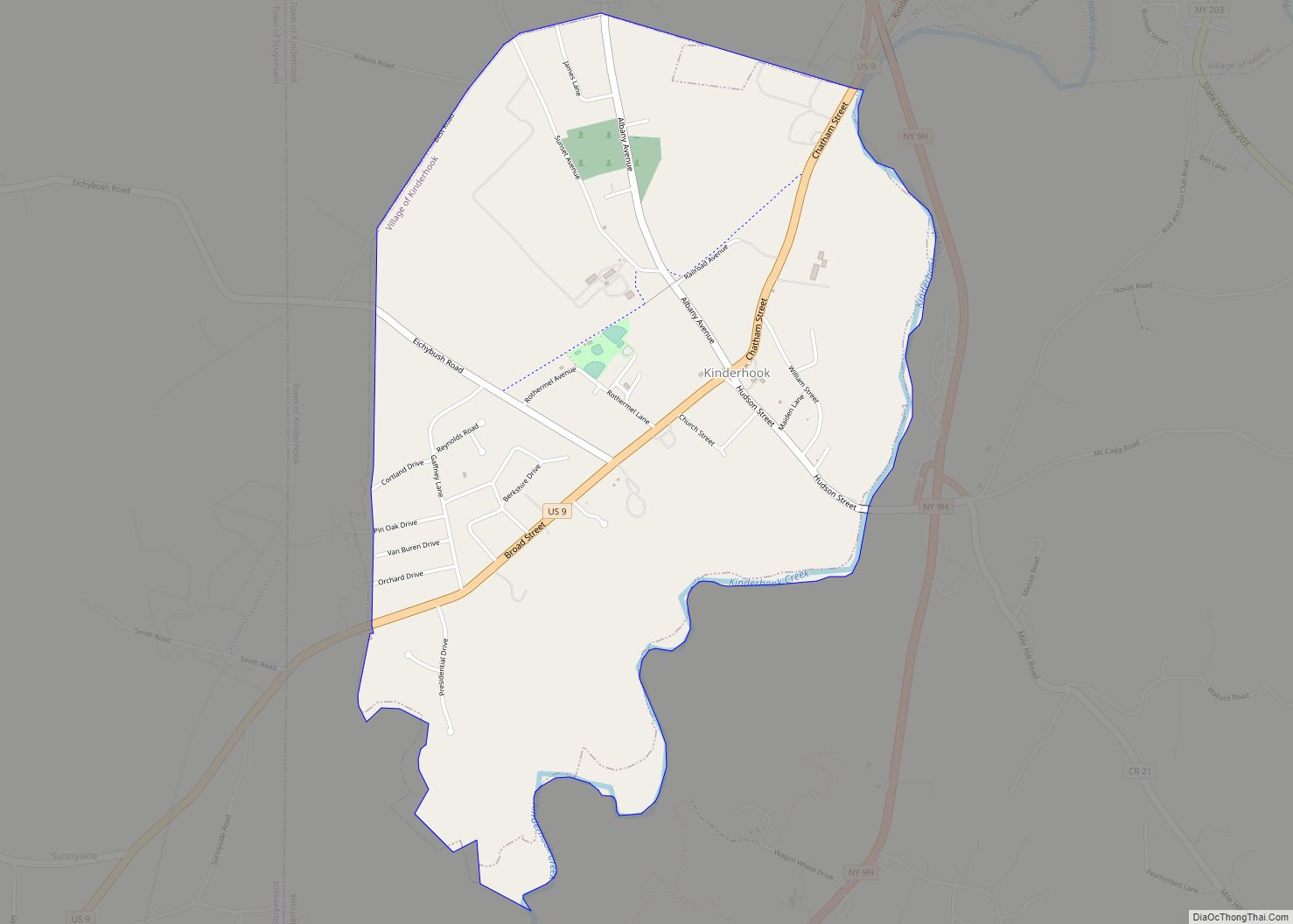Hudson is a city in Columbia County, New York, United States. At the 2020 census, it had a population of 5,894. On the east side of the Hudson River, 120 miles from the Atlantic Ocean, it was named after the river’s explorer Henry Hudson.
| Name: | Hudson city |
|---|---|
| LSAD Code: | 25 |
| LSAD Description: | city (suffix) |
| State: | New York |
| County: | Columbia County |
| Founded: | Incorporated |
| Elevation: | 100 ft (30 m) |
| Total Area: | 2.33 sq mi (6.03 km²) |
| Land Area: | 2.16 sq mi (5.59 km²) |
| Water Area: | 0.17 sq mi (0.45 km²) |
| Total Population: | 5,894 |
| Population Density: | 2,731.23/sq mi (1,054.60/km²) |
| ZIP code: | 12534 |
| FIPS code: | 3635969 |
| GNISfeature ID: | 0953386 |
| Website: | www.cityofhudson.org |
Online Interactive Map
Click on ![]() to view map in "full screen" mode.
to view map in "full screen" mode.
Hudson location map. Where is Hudson city?
History
The native Mahican people had occupied this territory for hundreds of years before Dutch colonists began to settle here in the 17th century, calling it “Claverack Landing”. In 1662, some of the Dutch bought this area of land from the Mahican. It was originally part of the Town of Claverack.
In 1783, the area was settled largely by Quaker New England whalers and merchants hailing primarily from the islands of Nantucket and Martha’s Vineyard in Massachusetts, and Providence, Rhode Island, led by Thomas and Seth Jenkins. They capitalized on Hudson being at the head of navigation on the Hudson River and developed it as a busy port. Hudson was chartered as a city in 1785. The self-described “Proprietors” laid out a city grid. By 1786, the city had several fine wharves, warehouses, a spermaceti-works and fifteen hundred residents.
In 1794, John Alsop of the New York City shipping and commission agents, Alsop & Hicks relocated to Hudson for a brief time. He continued to maintain a part interest in the firm and brought in customers from the Hudson area, including: Thomas Jenkins & Sons, Seth Jenkins, and the Paddock family, among others. After Alsop’s death in November 1794, his partner, Isaac Hicks, began to focus more of his efforts towards increasing his sale of whale products-especially oil and spermaceti candles. Hudson grew rapidly as an active port and came within one vote of being named by the state legislature as the capital of New York state, losing to Albany, an historic center of trade from the 17th century.
Hudson grew rapidly, and by 1790 was the 24th-largest city in the United States. In 1820, it had a population of 5,310 and ranked as the fourth-largest city in New York, after New York City, Albany and Brooklyn. Construction of the Erie Canal in 1824 drew development west in the state, stimulating development of cities related to Great Lakes trade, such as Rochester and Buffalo, although the Hudson River continued to be important to commerce.
The renowned case of People v. Croswell began in Hudson when Harry Croswell published on September 9, 1802 an attack on Thomas Jefferson in the Federalist paper The Wasp. The state’s Democratic-Republican attorney General Ambrose Spencer indicted Croswell for a seditious libel. The case eventually wound up with Alexander Hamilton defending Crosswell before the New York Supreme court in Albany in 1804. Crosswell lost, apparently due the influence of anti-Federalist Justice Morgan Lewis. However, enough state assemblymen had observed the trial that in 1805 they changed the state law on libel.
During the 19th century, considerable industry was developed in Hudson, and the city became known as a factory town. It attracted new waves of immigrants and migrants to industrial jobs. Wealthy factory owners and merchants built fine houses in the Victorian period. Hudson obtained a new charter in 1895. It reached its peak of population in 1930, with 12,337 residents.
In 1935, to celebrate the sesquicentennial of the city, the United States Mint issued the Hudson Half Dollar. The coin is one of the rarest ever minted by the United States Government, with only 10,008 coins struck. On the front of the coin is an image of Henry Hudson’s ship the Half Moon, and on the reverse is the seal of the city. Local legend has it that coin was minted on the direct order of President Franklin Delano Roosevelt to thank the Hudson City Democratic Committee for being the first to endorse him for state senator and governor.
In the late 19th and first half of the 20th century, Hudson became notorious as a center of vice, especially gambling and prostitution. The former Diamond Street is today Columbia Street. At the peak of the vice industry, Hudson boasted more than 50 bars. These rackets were mostly broken up in 1951, after surprise raids of Hudson brothels by New York state troopers under orders from Governor Thomas E. Dewey netted several local policemen, among other customers.
In 2020, HudsonUP, a Universal basic income pilot was launched in Hudson by The Spark of Hudson community center together with Humanity Forward Foundation.
Land use controversy
From late 1998 until spring 2005, a land-use conflict took place when St. Lawrence Cement (SLC), a subsidiary of Swiss multinational Holderbank (since renamed Holcim), then one of the world’s largest cement companies, proposed to build a cement-manufacturing plant. The massive coal-fired plant project would have occupied more than 1,800 acres (7.3 km) in the city of Hudson and the town of Greenport. Supporters cited the project for jobs and stimulating other growth. Sustained grassroots opposition to the project was led by business owner Peter Jung and journalist Sam Pratt, co-founders of Friends of Hudson (FOH). Opponents argued the proposed project violated state environmental regulations and would adversely affect the river, shoreline, and related habitats.
The controversy gained national attention from news outlets such as CNN and The New York Times, as well as media outlets in Canada and Switzerland. The project was withdrawn after New York Secretary of State Randy Daniels determined that the company’s plans were inconsistent with New York State’s 24 coastal policies. Opponents of the cement project described the ruling as “a colossal relief”, and supporters, including the Business Council of New York State, denounced it as “flawed in its logic”. Nearly 14,000 public comments were received by the State’s Division of Coastal Resources (87% of them opposed to the project), a record for that agency.
LGBTQ community
In the early 21st century, Hudson has become a destination for LGBTQ people. In 2010, Hudson High School openly gay seniors, Timothy Howard and Charlie Ferrusi, made national history when they won prom king and queen. During the same year, Hudson hosted its first LGBTQ pride parade, attended by several hundred people. Lil’ Deb’s Oasis is a restaurant in the city that hosts queer events and is an LGBTQ gathering space.
Hudson Road Map
Hudson city Satellite Map
Geography
According to the United States Census Bureau, the city has a total area of 2.3 square miles (6.0 km), of which 2.2 square miles (5.6 km) is land and 0.15 square miles (0.4 km), or 7.38%, is water.
Hudson is located 120 miles from New York Harbor, at the head of navigation on the Hudson River, on what originally was a spit of land jutting into the Hudson River between the South Bay and North Bay. Both bays have been largely filled in. Across the Hudson River lies the town of Athens in Greene County; a ferry connected the two municipalities during much of the 19th century. Between them lies Middle Ground Flats, a former sandbar that grew due to both natural silting and also from dumping the spoils of dredging; today it is inhabited by deer and a few occupants of quasi-legal summer shanties. The Town of Greenport borders the other three sides of the city.
See also
Map of New York State and its subdivision:- Albany
- Allegany
- Bronx
- Broome
- Cattaraugus
- Cayuga
- Chautauqua
- Chemung
- Chenango
- Clinton
- Columbia
- Cortland
- Delaware
- Dutchess
- Erie
- Essex
- Franklin
- Fulton
- Genesee
- Greene
- Hamilton
- Herkimer
- Jefferson
- Kings
- Lake Ontario
- Lewis
- Livingston
- Madison
- Monroe
- Montgomery
- Nassau
- New York
- Niagara
- Oneida
- Onondaga
- Ontario
- Orange
- Orleans
- Oswego
- Otsego
- Putnam
- Queens
- Rensselaer
- Richmond
- Rockland
- Saint Lawrence
- Saratoga
- Schenectady
- Schoharie
- Schuyler
- Seneca
- Steuben
- Suffolk
- Sullivan
- Tioga
- Tompkins
- Ulster
- Warren
- Washington
- Wayne
- Westchester
- Wyoming
- Yates
- Alabama
- Alaska
- Arizona
- Arkansas
- California
- Colorado
- Connecticut
- Delaware
- District of Columbia
- Florida
- Georgia
- Hawaii
- Idaho
- Illinois
- Indiana
- Iowa
- Kansas
- Kentucky
- Louisiana
- Maine
- Maryland
- Massachusetts
- Michigan
- Minnesota
- Mississippi
- Missouri
- Montana
- Nebraska
- Nevada
- New Hampshire
- New Jersey
- New Mexico
- New York
- North Carolina
- North Dakota
- Ohio
- Oklahoma
- Oregon
- Pennsylvania
- Rhode Island
- South Carolina
- South Dakota
- Tennessee
- Texas
- Utah
- Vermont
- Virginia
- Washington
- West Virginia
- Wisconsin
- Wyoming

